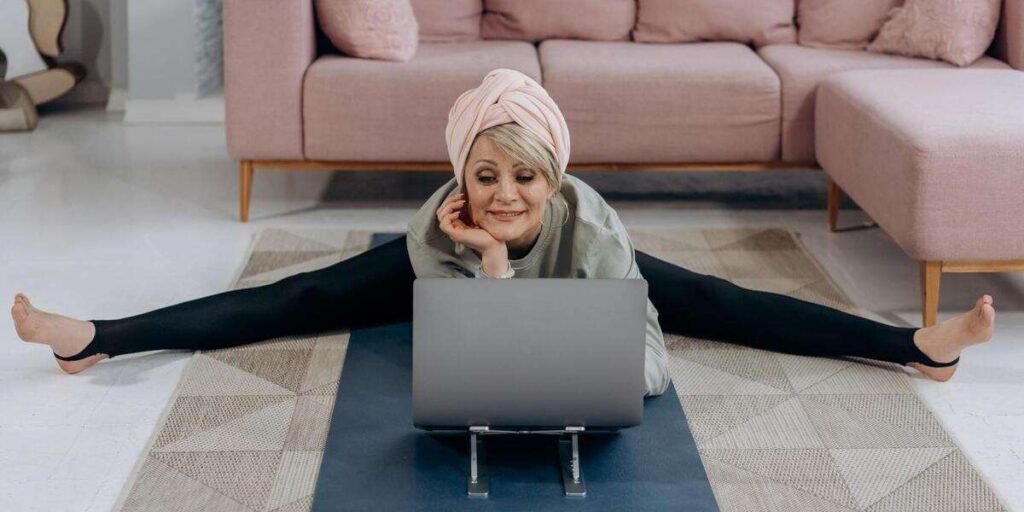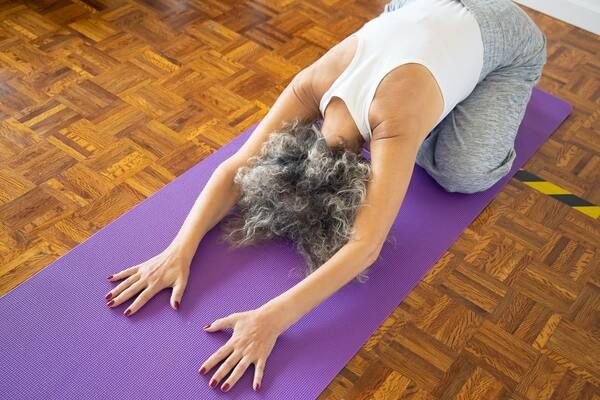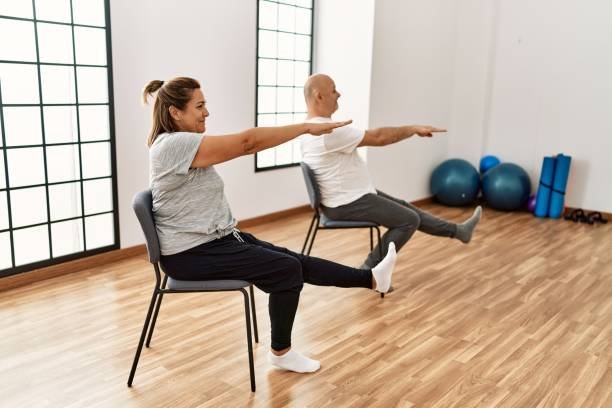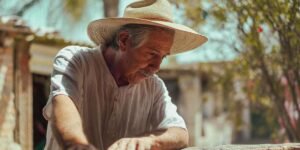
Elderly People, Take Action! Say Goodbye to Pain With Simple Movements
According to the definition of the World Health Organization (WHO), Census 2021 results show the population of England and Wales has continued to age since 2011. The number of people aged 65 years and over increased from 9.2 million in 2011 to over 11 million in 2021 and the proportion of people aged 65 years and over rose from 16.4% to 18.6%. If it reaches 20% It is called a “super-aged society”. Therefore, various issues and policies related to long-term care and other issues related to the elderly have attracted more and more attention, especially the health aspect, because as the body ages, it is inevitable that there will be diseases and it is easy to be injured or have difficulty moving. But in fact, seniors can rely on their own efforts to stay away from illness as much as possible, or delay the onset of illness. Exercise is a very important key, which can help seniors avoid injuries and illnesses more effectively, regardless of the intensity of the exercise. Therefore, seniors should be more active so that they can grow old healthily and die disease-free!
7 Benefits of Exercise for Seniors
- Extended lifespan: Research shows that prolonged sitting is a major cause of death and reduced mobility. However, even moderate exercise can add three to five years to your lifespan.
- Reduce the risk of stroke and heart disease.
- Enhance bone density.
- Reduce the chance of dementia.
- Prevent or delay the occurrence of diseases: Exercise is a good treatment for chronic diseases. Studies have pointed out that people with arthritis, heart disease or diabetes can reduce symptoms as long as they exercise regularly. can be improved.
- Strengthen cognitive abilities.
- Strengthen memory.
What sports can I try?
There are many types of exercise for seniors, such as aerobic exercise, which can improve heart rate and contribute to cardiovascular health. Common aerobic exercises include brisk walking, jogging, cycling, swimming, etc.
In addition, you can also try some muscle strength training. Muscle strength training is to add some weight to different parts of the muscles, or use elastic bands to exercise. It can also be done by the body without external assistance, such as at home or Go to the park and do push-ups, horizontal bars, sit-ups, etc. In addition, gardening (which involves digging, pulling, etc.), moving things, yoga, Tai Chi, etc. are also good exercises.
Recommended amount of exercise
Do 2.5 hours of normal-intensity aerobic exercise (such as brisk walking) every week, or 75 minutes of high-intensity aerobic exercise (such as jogging, running) every week, plus at least two days of muscle strength training every week to strengthen the whole body. Important muscle groups such as legs, back, abdomen, chest, shoulders, arms, buttocks, etc.; you can also distribute aerobic exercise of different intensities evenly, plus at least two days of muscle strength training per week.
Simple exercises to train muscle strength and balance
In addition to general types of exercise, seniors can also try some small exercises that are easier to do and can move the body!
Stretching exercises
- Upper back stretch: Sit down, keep your shoulders relaxed, stretch your hands forward at shoulder height, hold your hands together and push outward, allowing your back and shoulders to stretch forward, hold for 10 seconds and then release.
- Sit + Stretch: Sit on the edge of the chair, stretch your feet forward, bend your knees slightly, place your heels on the ground, and point your toes in the sky. Extend your hands forward to touch your toes, keeping your waist bent, and hold for 10 seconds before sitting back to the original position.
- Neck stretching: Sit down with your feet shoulder-width apart, relax your hands on both sides, turn your head to the right, and do not lean forward or backward. If you feel a stretch in your neck, stop and hold for 10 to 30 seconds. Then do it on the other side.
- Inner thigh stretch: Stand with your feet slightly wider than your hips, with your toes pointing slightly outward. Slowly lean your body to the left, bend your left knee, and straighten your right foot. Your left knee should not exceed your toes. Hold for 10 seconds before changing. Do it on the other side.

Balance training exercise
- Flamenco Stand Training (Flamingo Stand): Stand with your feet together, relax your hands on both sides, bend your left knee, slightly lift your foot off the ground, balance your body with your right foot, and hold for 10 seconds before changing to the other side. You can put a chair next to your feet so that you can hold on to them when needed.
- Toe balance training: stand, relax your hands on both sides, stretch your left foot forward, let the left heel touch or be as close as possible to the tip of the right toe, repeat 15 to 20 times.
- Clock swing: Standing, holding the chair with your left hand, imagine that the direction of twelve o’clock is in front of you and the direction of six o’clock is behind you. Raise your left foot, stretch your right hand to twelve o’clock, then to three o’clock (right), and finally to six o’clock (back). At this time, the straight right arm will be in line with the left hand holding the chair, and then Repeat the steps with another hand.
Chair exercise
- Raise your forearms: Sit on a chair, hold a ball (about the size of a basketball) with your palms facing each other, bend your elbows slightly and stretch forward, put the ball on your legs, and then slowly lift the ball to shoulder height. Put it down again, the whole process takes about three seconds, and repeat 10 to 15 times.
- Tibial training: Sit on the edge of the chair, stretch your feet forward, with only your heels on the ground, and your knees slightly bent. Then press your toes down, then pull up, do 15 times, rest, and do 15 more times.
- Abdominal twist: Sit on a chair, hold a ball (about the size of a basketball) with both hands and place it against your abdomen, with your elbows slightly bent. Then slowly turn your body to the right, keeping your lower body still, then turn back and then to the left.

Strength training
- Micro squat: Stand up, grab a chair for support, and bend your knees as much as possible within a comfortable range. Your knees should not exceed your toes. Stand up again and repeat ten times.
- Hold the dumbbell and move up and down: stand up straight, with your feet shoulder-width apart, knees slightly bent, body slightly leaning forward, hold a dumbbell in each hand and hang it naturally, hold the dumbbell in an overhand manner (palms facing the body), and then use both hands to Lift the dumbbells to your chin, keep your back straight, shoulders still, put your hands down, and repeat ten times.
- Squeeze and expand your shoulders front and back: Stand up straight, relax your hands, squeeze your shoulder blades forward at the same time, pause for three seconds, then expand your shoulders backwards, pause for the same three seconds, and then relax, count one front and back, do 8 to 12 times, remember to do it When doing this, just let your shoulders droop naturally and don’t shrug your shoulders toward your ears.
- Shoulder and upper back muscle strength training: Bend your right arm, raise it so that your elbow is at chest height, put your right fist close to your left shoulder, place your left hand on your right elbow, and gently press your right arm to the left for 20 to 30 seconds. Repeat with the other hand.
Core muscle training
Foot-raising exercise: Lie down with your feet flat on the ground, relax, contract your abdominal muscles, and at the same time lift your left foot about 13 centimeters high, hold it for three seconds, put it down, and then switch to your right foot.
Low intensity aerobic exercise
- Speed training: draw a six-step ladder grid (one step at a time) on the ground, or stick it with tape, then step on one step at a time, then step on the same step with the other foot, and walk through all the steps in sequence. Finished, go back and walk again.
- Step on the stairs: Find a staircase and do this exercise at the bottom of the stairs. Step on the first step with your left foot, let your right foot hang in the air, and stay for a second. When going down the stairs, put your right foot down first, then switch to the left foot, and then switch to the right foot. On the feet, repeat the same action ten times on both feet.
Because of their age, seniors are more susceptible to injuries and illnesses. However, as long as they exercise regularly, they will not live forever, but they can stay away from pain and illness as much as possible. So seniors, please take action and make yourself healthier!












